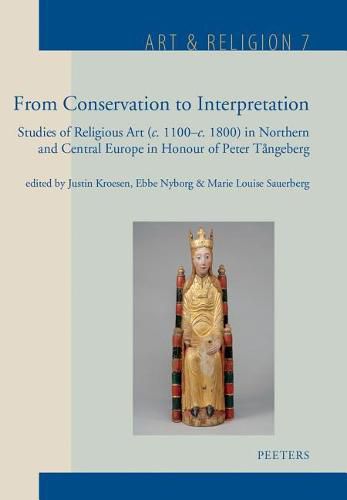Readings Newsletter
Become a Readings Member to make your shopping experience even easier.
Sign in or sign up for free!
You’re not far away from qualifying for FREE standard shipping within Australia
You’ve qualified for FREE standard shipping within Australia
The cart is loading…






Technology and conservation are indispensible to our understanding of
the history of religious art. Material and technical aspects of
historical art works yield a great deal of information about provenance,
and thus reflect the cultural networks that characterized the world that
produced them. Furthermore, the imagery and decoration of art works
express their religious meanings, while details including reworking and
damage may inform us about their use (or disuse) in liturgy and
devotion.
The Swedish conservator and art historian Peter Tangeberg has shown how
the insights and methods of art conservation can make important steps in
the history of art (not least religious art). He has brought the wealth
of medieval and early modern art works in Scandinavia to a European
audience and opened up new discussions - as well as stirring up old ones
materials and technologies across Central and Northern Europe.
This volume, which is dedicated to Tangeberg by fifteen friends and
colleagues on the occasion of his 75th birthday, reflects much of his
long and fruitful professional life. All of the contributions pursue a
combined perspective on technical/material issues and contextual (mostly
liturgical or devotional) aspects. The art works cover the period from
c. 1100 to c. 1800 and all originated in the wide area of Tangeberg’s
scholarly activity, especially Scandinavia and large parts of Western
and Central Europe.
$9.00 standard shipping within Australia
FREE standard shipping within Australia for orders over $100.00
Express & International shipping calculated at checkout
Technology and conservation are indispensible to our understanding of
the history of religious art. Material and technical aspects of
historical art works yield a great deal of information about provenance,
and thus reflect the cultural networks that characterized the world that
produced them. Furthermore, the imagery and decoration of art works
express their religious meanings, while details including reworking and
damage may inform us about their use (or disuse) in liturgy and
devotion.
The Swedish conservator and art historian Peter Tangeberg has shown how
the insights and methods of art conservation can make important steps in
the history of art (not least religious art). He has brought the wealth
of medieval and early modern art works in Scandinavia to a European
audience and opened up new discussions - as well as stirring up old ones
materials and technologies across Central and Northern Europe.
This volume, which is dedicated to Tangeberg by fifteen friends and
colleagues on the occasion of his 75th birthday, reflects much of his
long and fruitful professional life. All of the contributions pursue a
combined perspective on technical/material issues and contextual (mostly
liturgical or devotional) aspects. The art works cover the period from
c. 1100 to c. 1800 and all originated in the wide area of Tangeberg’s
scholarly activity, especially Scandinavia and large parts of Western
and Central Europe.